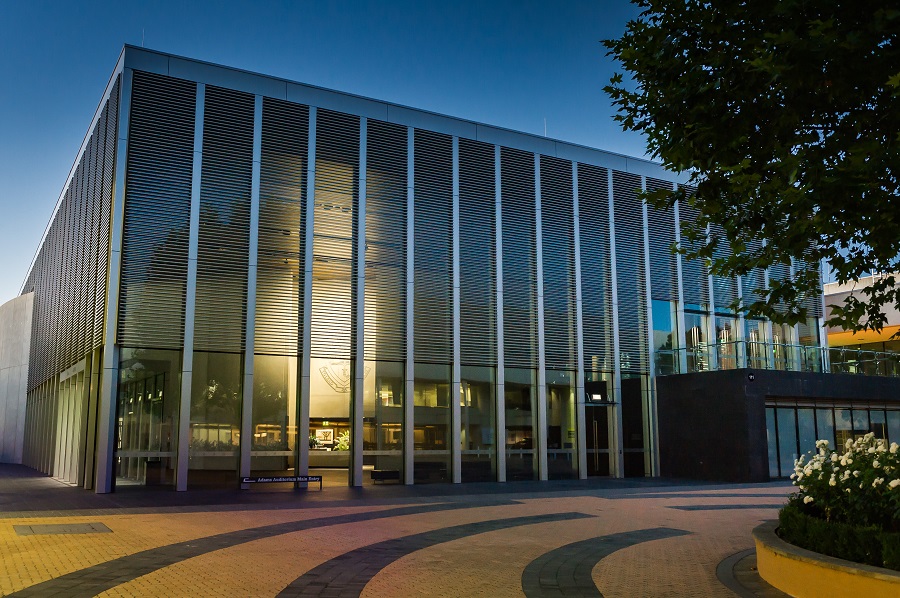The inaugural head of the University of NSW Defence Research Institute is a former Canadian sailor who rose to command the RCN and most recently served as Canada’s diplomatic representative in Canberra.
To continue reading the rest of this article, please log in.
Create free account to get unlimited news articles and more!
Vice Admiral (Ret'd) Paul Maddison served 37 years in the Canadian military, serving aboard and then commanding frigates, culminating in his appointment as Commander of the Royal Canadian Navy 2011-2013.
He served as Canadian high commissioner to Australia from 2015 to earlier this year. So, how did a former Canadian sailor comes to end up down under? For one thing, he’s married to an Aussie, Fay, who originally hails from Brisbane and Darwin.
All that gives him a very different perspective on Australia’s defence and security.
“As the inaugural director it is going to be my job to set the institute on the right course, to raise its profile as a pre-eminent defence research organisation, with a vision to growth and shaping greater readiness and capability for the Australian Defence Force and also for all agencies involved in Australia’s national security,” he said.
“It’s not about creating a large staff of a centre of activity. It’s more abut bringing together all of the research expertise at UNSW, which is pretty considerable, and raising the profile around the importance of defence capability.
“It’s about working with the research teams across and faculties and schools and the individual themselves took for opportunities to contribute to the competitive advantage that the ADF has and will need to continue to sustain, alongside our like-minded partners.”
Maddison said the priority needed to be in shaping an environment where there was an open and dynamic dialogue between the operators, government, industry, the research sector and allies.
“… to drive towards a common understanding of where the operating space is today, how rapidly it is evolving, what are the probable futures we are driving towards, where do we assess [we] are heading that might challenge our competitive advantage, how do we drive forward with a view to strengthening Australia’s national security,” he said.
“How do we drive forward to most rapidly get those capabilities fielded to the young men and women in uniform.
“There is a lot in all of that. Part of it is procurement, part of it is project management, part of it is the pure technologies around the disruptive changes being introduced by artificial intelligence, quantum computing, hypersonics, by a whole number of technologies.”
UNSW has had a long association with the ADF, initially though the Royal Military College in the 1960s and from 1986 through the Australian Defence Force Academy.
The UNSW Defence Research Institute was stood up early last year to leverage its wide ranging research in areas relevant to defence and security. That includes cyber security, space, systems engineering, artificial intelligence, logistics, hypersonics and defence-related public sector management and conflict studies.
Maddison said his job was about connecting with other universities, research institutes, with all layers of government and with defence industry.
“And most importantly with Defence itself so that we understand what are the capability gaps that are emerging, how is the battlespace being shaped here, how can we anticipate ways we can contribute to making the future warfighter better,” he said.
“And getting up and out of country to make sure we have strong relationships with our international partners, especially with our Five Eyes partners, with a real focus on collaborative development of defence capability and interoperability.”
That’s the long running intelligence alliance of Australia, Canada, the US, UK and New Zealand. Australia has an enduring relationship with Canada, although that can be overshadowed by the relationship with the US.
Maddison said he first sailed alongside Royal Australian Navy warships in the early 1980s. That continued with deployments to the Persian Gulf for the 1990 Kuwait War and then again in 2003 for the Iraq War.
Australian and Canadian special forces fought together in Afghanistan. Canadian officers serve on exchange postings throughout the ADF, as do Australian personnel in the Canadian military.
“We are like-minded, resources rich, vastly empty maritime trading nations, with similar sorts of GDP and economies,” he said.
“When I was Chief of Navy and I was trying to understand how I might best address some challenges, my first point of departure was to ask my colleague Chief of Navy in Australia what he was dealing with.”
Future navy to navy ties are likely to become even closer as Canada and Australia are both acquiring the UK Type 26 frigate as a next-generation warship.

 Login
Login







